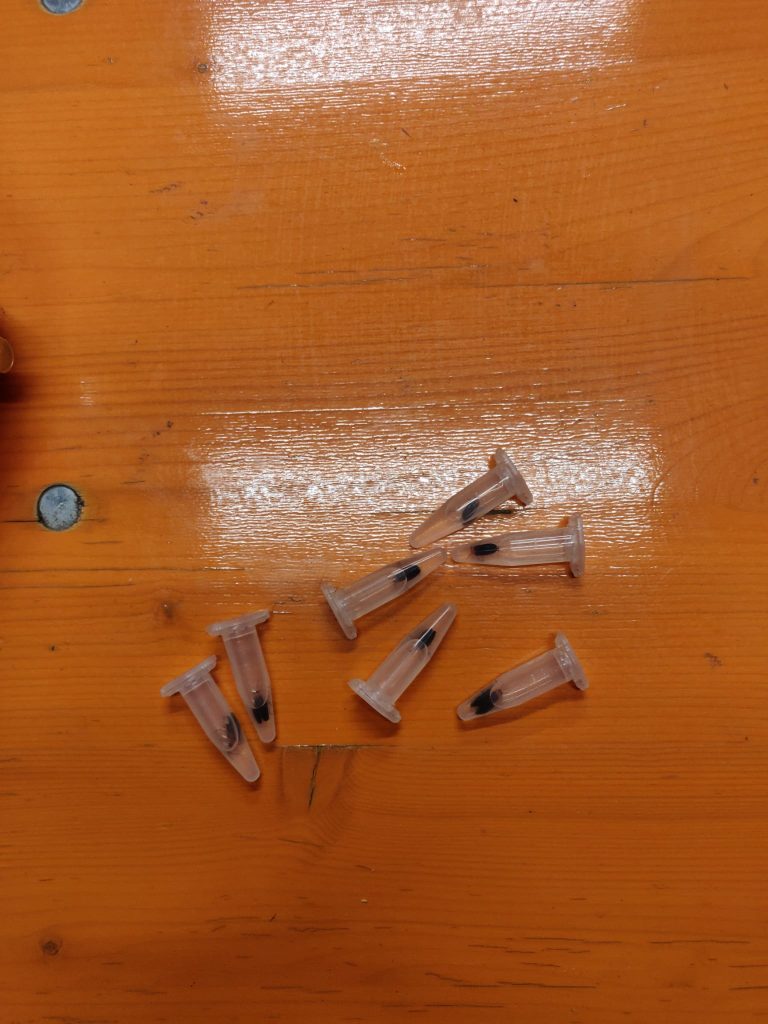Just recently started – in October 2024, L.U.C.E. is one of TETTRIs 12 satellite projects funded by all aimed at co-creating solutions that drive transformative change in taxonomy. With over €94,000 in funding, the project is dedicated to bridging critical knowledge gaps and advancing the conservation of Italy’s unique and underexplored firefly species.
Sparking knowledge: shedding light on Italy’s fireflies
The Italian Peninsula is home to 22 species of lampyrid fireflies, 10 of which are found nowhere else in the world. Despite their uniqueness, these species are largely unstudied, leaving significant gaps in our understanding of them. Fireflies play a crucial role in ecosystems, providing essential services like natural pest control. Studying and protecting these species is not just a scientific interest—it’s vital for maintaining ecological balance. However, much of the existing research is behind paywalls or buried in grey literature, and outdated taxonomic lists make it harder to grasp the full picture. Additionally, Italian fireflies are underrepresented in genetic databases, limiting our knowledge of their evolution, genetics, and environmental needs.
A major barrier to effective conservation is the lack of a comprehensive classification system for these species. Most research has focused on male fireflies, leading to a biased and incomplete understanding of these insects. This male-centered view overlooks the significant differences in females and immature stages, making it difficult to accurately identify all species, especially with the likelihood of “cryptic diversity”—species that appear similar but are genetically distinct. These hidden species may have unique environmental needs, meaning that without a clearer classification, conservation efforts may miss critical details.
The L.U.C.E. project seeks to address these knowledge gaps by training researchers throughout Italy to better document firefly species. By utilising advanced tools from TETTRIs, the project will digitise both historical and newly collected data, integrating geographic, morphological, and genetic information into a comprehensive and accessible database. In doing so, the project will shed light on the full extent of Italy’s firefly diversity, contributing to the protection of these unique insects and the ecosystems they sustain.
About L.U.C.E.
Throughout the next year, L.U.C.E.’s team will focus on three main goals:
- Train a new generation of firefly researchers.
The project will train a team of at least 8 early-career researchers from across Italy to collaborate on improving knowledge of the country’s firefly species. Using TETTRIs’ advanced name-matching and linking tools, the project aims to streamline data collection and make firefly information more accessible worldwide.
- Involve the public through citizen science.
The project will bring in a citizen science expert to boost public engagement with firefly and pollinator research. Early-career researchers will learn to implement citizen science methods, gathering data from the public and refining techniques through training designed by TETTRIs.
- Digitize Italy’s firefly taxonomic data
Lastly, the project will digitize both historic and newly collected firefly specimens across Italy, adding new geographical, physical, and genetic data. This work will help clarify species boundaries, close knowledge gaps, and create a clearer picture of Italy’s firefly diversity, ultimately supporting conservation efforts and increasing global access to critical biodiversity information.
The team behind L.U.C.E.
L.U.C.E. is a collaborative effort led by experts from the IRET-CNR [Research Institute of Terrestrial Ecosystems (IRET), of the National Research Council (CNR)] and Scuola Superiore Sant’Anna, two renowned institutions in Italy.
Dr. Emiliano Mori and Dr. Mariella Baratti, both from CNR’s Institute for Ecosystem Studies (IRET), will lead the molecular analysis of the firefly specimens, studying their genetic diversity and evolutionary history. This will be complemented by the expertise of Dr. Leonardo Ancillotto (also from CNR IRET) and Prof. Anna Camilla Moonen from Scuola Superiore Sant’Anna, who will focus on organizing training activities and studying the morphological diversity of fireflies.

Dr. Mori, the project coordinator, emphasises the importance of this initiative: “Developing this project is crucial to filling significant knowledge gaps about Italy’s firefly species. By training a new generation of researchers and using modern tools, we aim to enhance global understanding and conservation of this remarkable biodiversity.”
Prof. Moonen highlights the broader ecological value of the project “This initiative will not only advance scientific knowledge but also shed light on the ecological role of fireflies. By understanding their potential for natural pest control, we can highlight their importance in maintaining healthy ecosystems.”
What’s next for L.U.C.E.?
Over the next year, L.U.C.E. will collect and analyze firefly specimens from across Italy. As more data is gathered, the project will begin to unravel the complex relationships between different firefly populations and their environments. This will be crucial for creating targeted conservation plans, particularly as firefly species face increasing environmental pressures, such as habitat loss and climate change.



The project’s findings will not only shed light on the firefly species in Italy but will also have broader implications for biodiversity conservation in Mediterranean and Macaronesia regions, where similar issues of hidden species diversity persist.
Stay connected:
Keep up with L.U.C.E.’s at @italian_fireflies!

